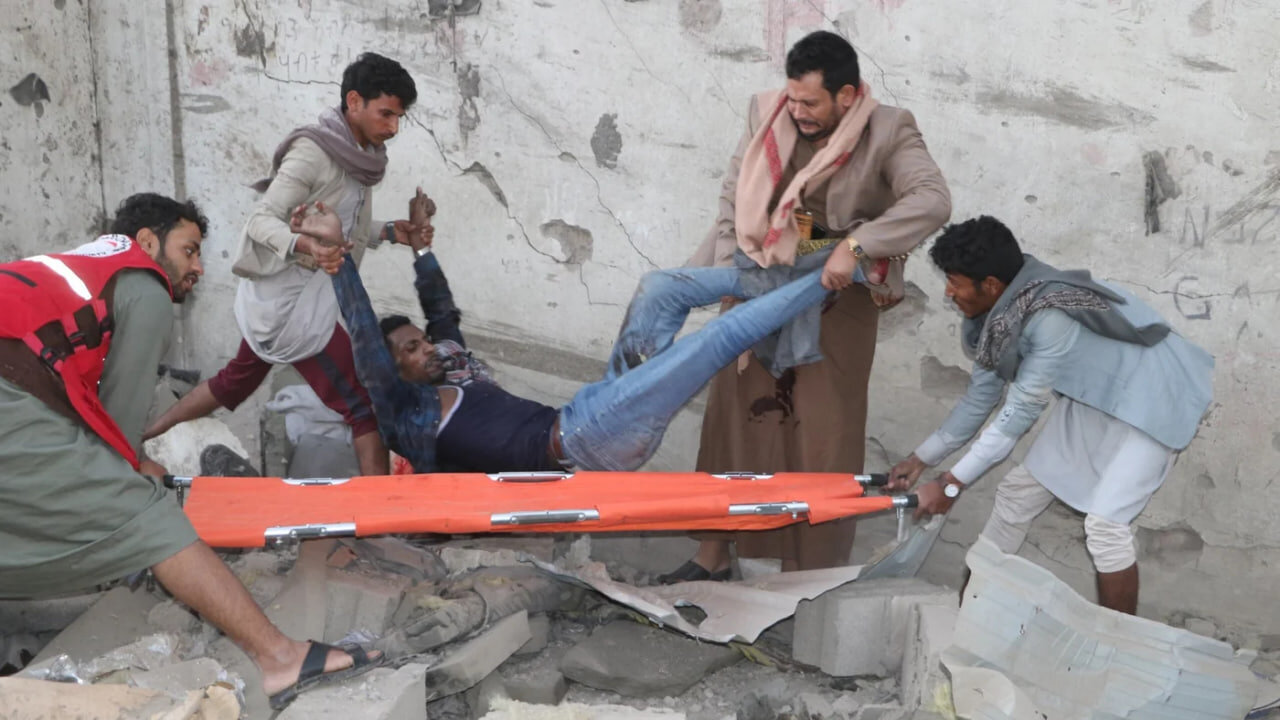‘Unspeakable cruelty’: Yemeni civilians recount horror of US air strikes

Mohammed doesn’t know why his neighborhood was struck by U.S. warplanes on Sunday evening.
He lives in Thuqban, in the Bani Alharith district of the Yemeni capital. It has no connection to Ansarallah or any military activity, he said.
A barrage of U.S. attacks on Thuqban left at least 12 civilians dead and four others wounded on 27 April.
Mohammed said the strikes wiped out four homes “in the blink of an eye”. One of those homes belonged to Ali Salah, who lived there with his four daughters and two sons.
“The strike hit the house at 8 p.m., killing the entire family,” Mohammed told Middle East Eye.
“We rushed to the scene, searching for them in the rubble. We didn’t find their bodies. They were just pieces of flesh. It was a horrendous scene of unspeakable cruelty.”
Allegations have since surfaced that the U.S. may have targeted the area based on amateur open-source intelligence accounts on X.
At least two anonymous accounts posted coordinates of the Thuqban area and falsely claimed it was an underground Ansarallah military position. One user has since apologized.
“Based on satellite imagery, I'd marked this quarry as an underground base, and tweeted [it] out as such,” one of the accounts, @VleckieHond wrote. “I'm fairly certain CENTCOM doesn't take their targeting data from Twitter, but this still is a very severe mistake.”
“I sincerely apologize for this error in my judgment, and it will never be my intention to spread false information here or elsewhere.”
As part of the apology, the user posted screenshots of two donations totaling $500 to Doctors Without Borders and the Yemen Data Project.
For the residents of Thuqban, the donations won’t bring back their neighbors and relatives.
“The killing of innocent civilians is an abject failure for the United States. It will prolong the war and create more enemies,” Mohammed said.
“Our tears and blood will fuel our will to counter and fight the Americans.”
A U.S. Central Command (CENTCOM) official told MEE that it “executes operations using detailed and comprehensive intelligence that ensures lethal effects against Iran-backed Houthis”.
‘Explosion tore my brother to pieces’
U.S. President Donald Trump's administration launched its deadly campaign on Yemen, dubbed Operation Rough Rider, on 15 March.
CENTCOM says that 800 targets have been hit, resulting in the death of Ansarallah fighters and leaders.
But human rights groups have noted an alarming rate of civilian deaths and injuries caused by the U.S. administration's strikes over the past month.
That was clearly apparent in the early hours of Monday (April 28), when a strike on a migrant detention center in Sadaa, northwest of the country, killed 68 African migrants and wounded dozens more.
Relentless and seemingly indiscriminate attacks have left Yemenis traumatized and grieving.
Ahmed, in his twenties, lost his younger brother in a U.S. strike on Furweh market in Sanaa on 20 April.
“My brother went to the bakery to buy us bread for dinner,” Ahmed told MEE. “The explosion tore him into pieces. Many others were killed and wounded in their homes and shops.”
That strike killed 12 civilians and wounded 30 others, according to health officials.
Ali, 50, narrowly survived the market attack.
“I saw two charred bodies on a motorbike and a dead woman and a child on the ground,” he told MEE. “There was one dead person in a grocery store, another in a bakery, and one in a minibus.”
“It was a heinous massacre, and no logical person on earth can justify it.”
UK joins US strikes
Late on Tuesday night, the UK joined its American allies in striking Yemen for the first time since early 2024.
The British Defense Ministry said RAF Typhoons targeted a “cluster of buildings” 15 miles south of Sanaa, which it said were used by Ansarallah to manufacture the drones that targeted shipping in the Red Sea and Gulf of Aden.
That same night, U.S. air strikes were reported in several other areas of Sanaa, including the Bani Matar, Al-Hussn, Hamdan and Bani Hushaish districts.
The latter district, in northeast Sanaa, is where Faisal Saghir was sat by the window in his apartment with his son Sameer, 10.
At 10:20 p.m., they heard a plane hovering nearby. The hovering lasted for 30 seconds and ended with a loud explosion nearby.
“A strike hit the one-story house of my neighbor, 30 meters away from my flat,” said Saghir. He was relieved to learn that his neighbors narrowly survived.
He and Sameer sustained wounds from the blast, as glass from the windows shattered everywhere. Another of his sons, aged 12, was left traumatized, crying repeatedly through the night.
Saghir stressed that Ansarallah had no military or administrative presence in the neighborhood.
He said that the trauma he and his sons were exposed to would be difficult to forget. “The horror we have seen in Gaza on television has now come to our doorstep.”
Leave a Comment